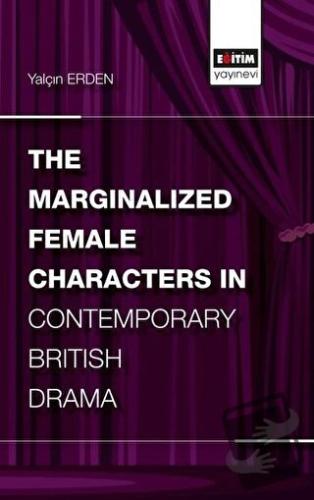
Despite the fact that women of the century have faced certain economic, social and political changes or improvements, male-supremacy has not weakened significantly: capitalist system employs patriarchal tools and exploits women much more severely compared to men; women, restricted by patriarchal boundaries, are stigmatised as envious more frequently; language that devalues women still shapes the perceptions of people; rape continues to control women's choices and lifestyles; pornography degrades and objectifies women through disseminated female images, and a great number of women are still confined within the private sphere.
Main focus of this book is the analysis of the plays, The Ant and the Cicada by Timberlake Wertenbaker, Revolt. She said. Revolt again. by Alice Birch, and I Can Hear You by E.V. Crowe in the book, Midsummer Mischief (2014), in order to question the factors that subordinate and dehumanize women within male-centred social order. Furthermore, remarkable similarities between the plays and William Shakespeare's A Midsummer Night's Dream are briefly underlined, and in each chapter, patriarchal boundaries that limit women even in today's world are studied from different angles via certain feminist theoreticians and playwrights who employ mischievous female characters in their plays.
| Taksit Sayısı | Taksit tutarı | Genel Toplam |
|---|---|---|
| Tek Çekim | 206,10 | 206,10 |
| 3 | 75,08 | 225,23 |
| 6 | 39,64 | 237,82 |
| 9 | 27,83 | 250,43 |
| 12 | 21,92 | 263,00 |
| Taksit Sayısı | Taksit tutarı | Genel Toplam |
|---|---|---|
| Tek Çekim | 206,10 | 206,10 |
| 3 | 75,08 | 225,23 |
| 6 | 39,64 | 237,82 |
| 9 | 27,83 | 250,43 |
| 12 | 21,92 | 263,00 |
| Taksit Sayısı | Taksit tutarı | Genel Toplam |
|---|---|---|
| Tek Çekim | 206,10 | 206,10 |
| 3 | 75,08 | 225,23 |
| 6 | 39,64 | 237,82 |
| 9 | 27,83 | 250,43 |
| 12 | 21,92 | 263,00 |
| Taksit Sayısı | Taksit tutarı | Genel Toplam |
|---|---|---|
| Tek Çekim | 206,10 | 206,10 |
| 3 | 75,08 | 225,23 |
| 6 | 39,64 | 237,82 |
| 9 | 27,83 | 250,43 |
| 12 | 21,92 | 263,00 |
| Taksit Sayısı | Taksit tutarı | Genel Toplam |
|---|---|---|
| Tek Çekim | 206,10 | 206,10 |
| 3 | 75,08 | 225,23 |
| 6 | 39,64 | 237,82 |
| 9 | 27,83 | 250,43 |
| 12 | 21,92 | 263,00 |
| Taksit Sayısı | Taksit tutarı | Genel Toplam |
|---|---|---|
| Tek Çekim | 206,10 | 206,10 |
| 3 | 75,08 | 225,23 |
| 6 | 39,64 | 237,82 |
| 9 | 27,83 | 250,43 |
| 12 | 21,92 | 263,00 |
| Taksit Sayısı | Taksit tutarı | Genel Toplam |
|---|---|---|
| Tek Çekim | 206,10 | 206,10 |
| 3 | - | - |
| 6 | - | - |
| 9 | - | - |
| 12 | - | - |
Despite the fact that women of the century have faced certain economic, social and political changes or improvements, male-supremacy has not weakened significantly: capitalist system employs patriarchal tools and exploits women much more severely compared to men; women, restricted by patriarchal boundaries, are stigmatised as envious more frequently; language that devalues women still shapes the perceptions of people; rape continues to control women's choices and lifestyles; pornography degrades and objectifies women through disseminated female images, and a great number of women are still confined within the private sphere.
Main focus of this book is the analysis of the plays, The Ant and the Cicada by Timberlake Wertenbaker, Revolt. She said. Revolt again. by Alice Birch, and I Can Hear You by E.V. Crowe in the book, Midsummer Mischief (2014), in order to question the factors that subordinate and dehumanize women within male-centred social order. Furthermore, remarkable similarities between the plays and William Shakespeare's A Midsummer Night's Dream are briefly underlined, and in each chapter, patriarchal boundaries that limit women even in today's world are studied from different angles via certain feminist theoreticians and playwrights who employ mischievous female characters in their plays.










